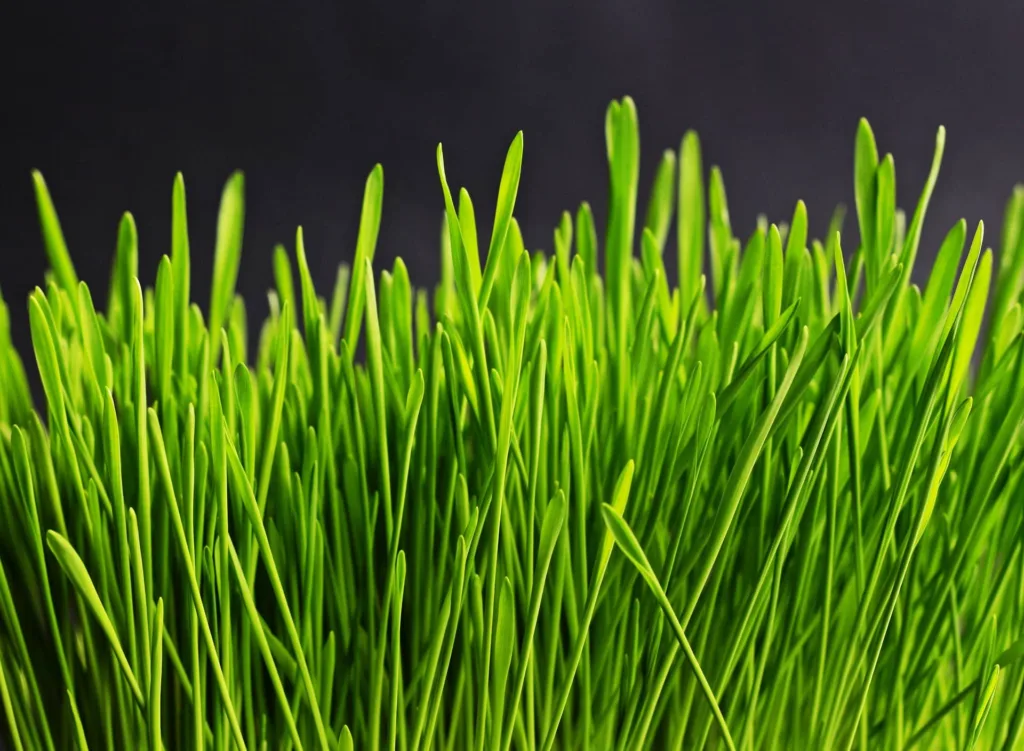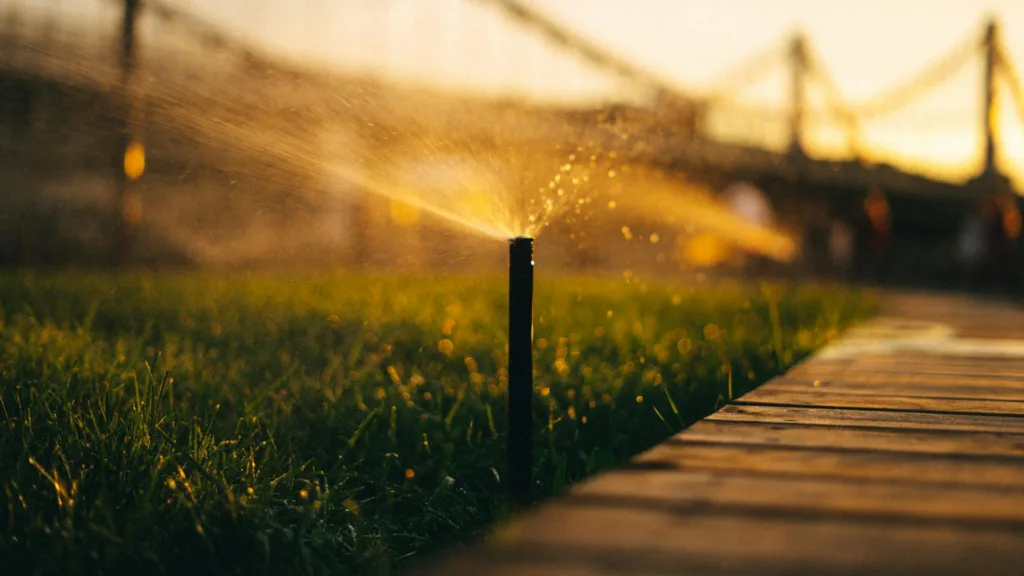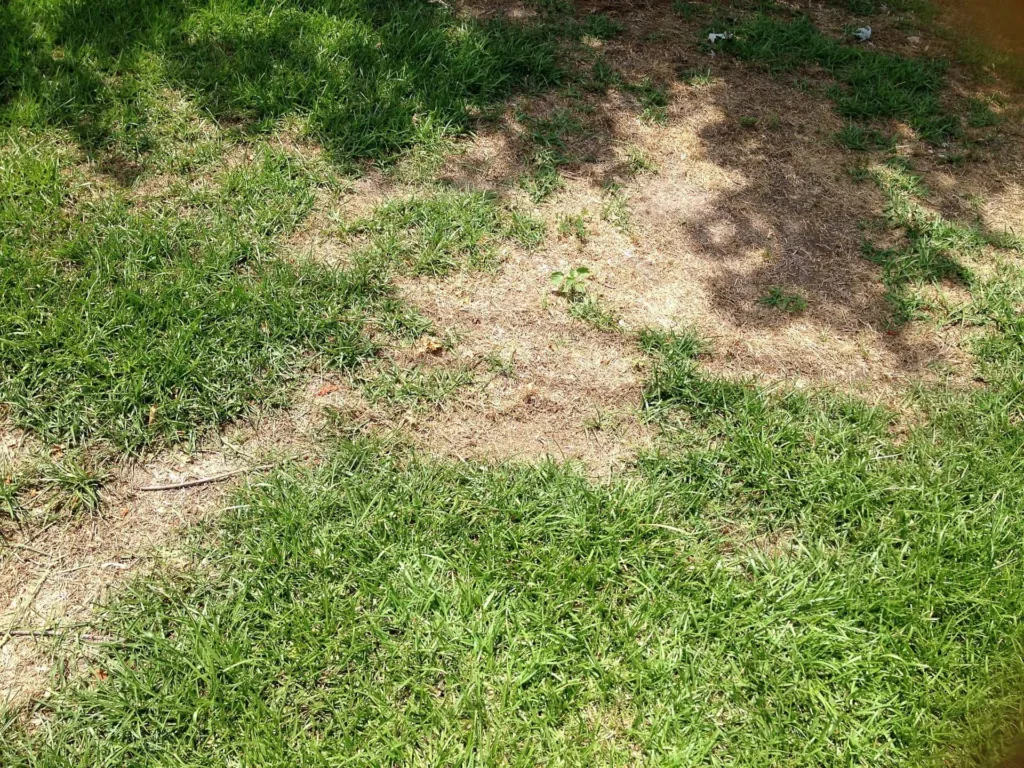Maintaining a lush, green lawn isn’t a one-size-fits-all endeavor. Your location’s climate plays a crucial role in determining the best approach to lawn care. Whether you’re battling scorching summers or preparing for frosty winters, understanding climate-specific lawn care is key to achieving that picture-perfect yard. This comprehensive guide will walk you through the ins and outs of lawn care for different climates, ensuring your grass stays healthy and vibrant year-round.
Understanding Your Climate Zone: The Foundation of Effective Lawn Care
Before diving into specific lawn care techniques, it’s essential to identify your climate zone. The United States boasts a diverse range of climates, from the arid Southwest to the humid Southeast and the frigid Northeast. Each of these zones presents unique challenges and opportunities for lawn care.
Major Climate Zones in the US
- Cool-humid (Northeast and Midwest): Characterized by cold winters and mild summers
- Warm-humid (Southeast): Hot, muggy summers and mild winters
- Cool-arid (Great Plains): Cold winters, hot summers, and low rainfall
- Warm-arid (Southwest): Hot, dry conditions year-round
- Mediterranean (Pacific Coast): Mild, wet winters and warm, dry summers
- Transition Zone: A challenging mix of conditions between warm and cool regions
Understanding your specific microclimate is crucial for tailoring your lawn care approach. Factors like elevation, proximity to water bodies, and urban heat islands can create unique microclimates within broader zones. To determine your microclimate:
- Check local weather patterns
- Observe sun exposure and wind patterns in your yard
- Consider nearby structures that might affect temperature or moisture
“Climate is what we expect, weather is what we get.” – Mark Twain
This quote reminds us that while understanding your climate zone is crucial, being adaptable to daily weather fluctuations is equally important in lawn care.
Choosing the Right Grass for Your Climate: The Key to a Thriving Lawn

Selecting grass varieties suited to your climate is fundamental to successful lawn care across different climates. Let’s explore the main types:
Cool-Season Grasses
Ideal for northern regions, these grasses thrive in temperatures between 60-75°F (15-24°C).
Popular cool-season grasses:
- Kentucky Bluegrass
- Fescue (Fine and Tall)
- Perennial Ryegrass
Best climates: Cool-humid and cool-arid zones
Warm-Season Grasses
These grasses flourish in temperatures between 80-95°F (27-35°C), making them perfect for southern regions.
Popular warm-season grasses:
- Bermuda Grass
- Zoysia Grass
- St. Augustine Grass
Ideal climates: Warm-humid and warm-arid zones
Transition Zone Grasses
The transition zone presents a unique challenge, requiring grasses that can withstand both hot summers and cold winters.
Transition zone grass options:
- Tall Fescue
- Kentucky Bluegrass (in cooler areas)
- Zoysia (in warmer areas)
Choosing the right grass type is crucial for climate-specific lawn care. It sets the foundation for all your future lawn maintenance efforts.
Seasonal Lawn Care Across Different Climates: A Year-Round Approach
Each season brings its own set of challenges and tasks for lawn care. Let’s break down the lawn care basics in different climates throughout the year. While the following is a general idea of seasonal lawn care, it is important for you to create your own lawn care schedule.
Spring Lawn Care
As the ground thaws and plants awaken, spring is a crucial time for lawn care across all climates.
Cool Climate Strategies:
- Rake to remove winter debris and thatch
- Overseed bare patches
- Apply pre-emergent herbicide to prevent weed growth
- Begin mowing when grass reaches 3 inches
Warm Climate Approaches:
- De-thatch and aerate the lawn
- Apply pre-emergent herbicide
- Fertilize with a balanced, slow-release fertilizer
- Increase watering as temperatures rise
Transition Zone Techniques:
- Overseed cool-season grasses if needed
- Apply pre-emergent herbicide
- Fertilize lightly
- Monitor for signs of pest activity
Summer Lawn Maintenance
Summer brings intense heat and potential drought, making it a challenging season for lawn care.
Beating the Heat in Warm Climates:
- Water deeply but infrequently to encourage deep root growth
- Mow at a higher setting to provide shade for grass roots
- Apply mulch to retain moisture
- Consider “grasscycling” (leaving clippings on the lawn) to return nutrients to the soil
Keeping Cool-Season Grasses Alive in Hot Weather:
- Water early in the morning to reduce evaporation
- Avoid fertilizing during peak summer heat
- Allow grass to grow slightly longer to protect roots
- Consider applying a light layer of compost to improve soil moisture retention
Drought Management Techniques:
- Prioritize watering: focus on high-value areas if water is scarce
- Use drought-resistant grass varieties in chronically dry areas
- Install rain barrels to collect and reuse rainwater
- Consider xeriscaping for extremely arid regions
Fall Lawn Preparation
Fall is a critical time for preparing your lawn for the winter ahead.
Winterizing in Cold Climates:
- Overseed cool-season lawns
- Apply fall fertilizer high in potassium for winter hardiness
- Continue mowing until grass stops growing
- Rake leaves promptly to prevent smothering the grass
Extended Growing Season in Warm Regions:
- Overseed warm-season lawns with ryegrass for winter color
- Adjust watering schedule as temperatures cool
- Apply a winterizing fertilizer
- Control winter weeds with pre-emergent herbicides
Transition Zone Balancing Act:
- Overseed cool-season grasses
- Gradually lower mowing height
- Apply a balanced fertilizer
- Continue watering until the ground freezes
Winter Lawn Protection
Winter care varies dramatically depending on your climate.
Snow and Frost Management in Cold Climates:
- Avoid walking on frozen grass to prevent damage
- Clear heavy snow to prevent snow mold
- Apply winter mulch to protect roots in areas with fluctuating temperatures
Winter Growth in Warm Regions:
- Continue mowing as needed, but at a higher setting
- Water less frequently but deeply
- Monitor for winter weeds and remove as necessary
Dealing with Sporadic Freezes in Transition Zones:
- Cover sensitive areas when frost is expected
- Water before a freeze to insulate roots
- Avoid fertilizing late in the season to prevent new growth vulnerable to frost
Climate-Specific Watering Techniques: The Lifeblood of Your Lawn

Proper watering is crucial for lawn care in different climates. Let’s explore strategies for various conditions:
Efficient Irrigation in Dry Climates
- Water deeply and infrequently to encourage deep root growth
- Use drip irrigation or soaker hoses to minimize evaporation
- Water early in the morning or late in the evening
- Consider xeriscaping or using drought-resistant grass varieties
Managing Excess Moisture in Humid Areas
- Water less frequently but more deeply
- Improve drainage through aeration and dethatching
- Monitor for fungal diseases common in humid conditions
- Consider raised beds or berms for areas prone to standing water
Adapting Watering Schedules to Seasonal Changes
| Season | Cool Climate | Warm Climate | Transition Zone |
|---|---|---|---|
| Spring | 1″ per week | 1-1.5″ per week | 1″ per week |
| Summer | 1-1.5″ per week | 2″ per week | 1.5-2″ per week |
| Fall | 1″ per week | 1″ per week | 1″ per week |
| Winter | As needed when not frozen | 0.5-1″ per week | As needed when not frozen |
Note: These are general guidelines. Always adjust based on local conditions and rainfall.
Smart Irrigation Systems for Climate-Responsive Watering
Investing in a smart irrigation system can significantly improve your lawn’s health while conserving water. These systems use weather data and soil moisture sensors to adjust watering schedules automatically. Some features to look for include:
- Weather-based controllers
- Soil moisture sensors
- Rain sensors
- Mobile app control for easy adjustments
By implementing these climate-specific watering techniques, you’ll ensure your lawn receives the right amount of water, regardless of your local climate challenges.
Soil Management for Different Climates: The Foundation of a Healthy Lawn
Proper soil management is crucial for lawn care across different climates. The soil’s composition, pH, and nutrient content significantly impact grass health and growth.
Understanding Your Soil Type
Different climates often correlate with specific soil types. Here’s a quick guide:
- Sandy soil: Common in arid climates, drains quickly but retains few nutrients
- Clay soil: Often found in humid areas, holds water and nutrients well but can become compacted
- Loamy soil: The ideal soil type, balances water retention and drainage
- Silt soil: Fine particles that hold water well but can become compacted
To determine your soil type, conduct a simple jar test:
- Fill a clear jar 1/3 full with soil
- Add water until the jar is almost full
- Shake vigorously and let settle for 24 hours
- Observe the layers: sand will settle first, then silt, then clay
pH Balancing Across Climate Zones
Soil pH affects nutrient availability and grass health. Most grasses prefer a slightly acidic to neutral pH (6.0-7.0).
pH adjustment strategies:
- For acidic soil (common in rainy climates): Add lime to raise pH
- For alkaline soil (common in arid regions): Add sulfur to lower pH
Always test your soil before making adjustments, and apply amendments gradually to avoid shocking the grass.
Organic Matter and Its Role in Climate-Resilient Lawns
Organic matter improves soil structure, water retention, and nutrient availability. It’s especially crucial in extreme climates:
- In hot, dry climates: Helps retain moisture and prevent erosion
- In cold climates: Provides insulation for grass roots
- In wet climates: Improves drainage and prevents soil compaction
Ways to increase organic matter:
- Leave grass clippings on the lawn
- Apply compost as a top dressing
- Use organic fertilizers
Fertilization Strategies for Various Climates
Proper fertilization is key to lawn care for different climates. Here’s a general guide:
| Climate Type | Fertilization Strategy |
|---|---|
| Cool-humid | Focus on fall fertilization for winter hardiness |
| Warm-humid | Multiple light applications throughout growing season |
| Cool-arid | Emphasize spring and fall applications |
| Warm-arid | Light, frequent applications with irrigation |
| Mediterranean | Focus on fall and early spring applications |
Remember, over-fertilization can be as harmful as under-fertilization. Always follow local guidelines and consider soil tests to determine your lawn’s specific needs.
Pest and Disease Control in Varying Climates: Protecting Your Green Investment

Different climates bring different challenges when it comes to pests and diseases. Understanding these threats is crucial for effective lawn care across different climates.
Common Pests in Cool Climates
- Grubs: These larvae of various beetles feed on grass roots
- Chinch bugs: Small insects that suck sap from grass blades
- European Crane Flies: Their larvae (leatherjackets) feed on grass roots
Control strategies:
- Maintain a healthy, well-watered lawn to improve resistance
- Use beneficial nematodes for natural grub control
- Apply targeted insecticides only when infestations are severe
Warm Climate Insect Challenges
- Fire ants: Build mounds and can damage grass roots
- Armyworms: Caterpillars that can quickly defoliate large areas
- Mole crickets: Damage grass by tunneling and feeding on roots
Management techniques:
- Regular monitoring to catch infestations early
- Use bait treatments for fire ants
- Encourage natural predators like birds and beneficial insects
Fungal Diseases Across Climate Zones
Fungal diseases can be particularly troublesome in humid conditions or areas with poor drainage.
Common lawn fungal diseases:
- Brown patch: Circular brown areas in the lawn
- Dollar spot: Small, circular patches of bleached grass
- Fusarium: Causes wilting and browning of grass blades
Prevention and treatment:
- Improve air circulation by pruning nearby trees and shrubs
- Water deeply but infrequently to avoid constant moisture on grass blades
- Apply fungicides when necessary, following local regulations
Eco-Friendly Pest Management Techniques
As part of responsible lawn care for different climates, consider these environmentally friendly pest control methods:
- Integrated Pest Management (IPM): This approach focuses on prevention and uses chemicals only as a last resort
- Beneficial insects: Encourage ladybugs, lacewings, and predatory wasps to control harmful pests
- Cultural practices: Proper mowing height, watering, and fertilization can make your lawn naturally more resistant to pests
- Organic treatments: Neem oil, diatomaceous earth, and insecticidal soaps can be effective against many pests
Lawn Care Equipment for Different Climates: Tools of the Trade
The right equipment can make a significant difference in your lawn care across different climates. Let’s explore the essential tools for various regions.
Must-Have Tools for Cold Climate Lawn Maintenance
- Snow blower: For efficient snow removal without damaging the grass
- Leaf blower/vacuum: To clear fallen leaves quickly in autumn
- Dethatching rake: To remove dead grass and improve air circulation
- Aerator: To alleviate soil compaction from winter freeze-thaw cycles
Essential Equipment for Warm Region Grass Care
- Mulching mower: To return nutrients to the soil and retain moisture
- Sprinkler system: For consistent watering in hot, dry conditions
- Edger: To maintain crisp borders along sidewalks and driveways
- Spreader: For even application of fertilizers and pest control products
Versatile Tools for Transition Zone Lawns
- All-season mower: Capable of handling both cool and warm-season grasses
- Core aerator: To improve soil structure and reduce compaction
- Overseeder: For rejuvenating lawns after summer stress or winter damage
- Soil testing kit: To monitor pH and nutrient levels throughout the year
Climate-Specific Features to Look for in Lawn Care Machinery
When selecting equipment for lawn care in different climates, consider these features:
- Cold climates: Look for equipment with cold-start capabilities and rust-resistant materials
- Warm climates: Opt for tools with sun and heat-resistant components
- Humid areas: Choose equipment with anti-corrosion coatings
- Arid regions: Select tools designed for dust protection
Pro tip: Invest in quality, climate-appropriate tools. They may cost more upfront but will last longer and perform better in your specific conditions.
Sustainable Lawn Care Practices Across Climates: Greening Your Lawn Care
As we become more environmentally conscious, sustainable lawn care for different climates is increasingly important. Let’s explore eco-friendly practices tailored to various climate challenges.
Reducing Water Usage in Dry Regions
- Xeriscaping: Incorporate drought-tolerant plants and hardscaping
- Rainwater harvesting: Install rain barrels or cisterns to collect rainwater
- Greywater systems: Reuse household water for irrigation
- Drought-resistant grass: Choose varieties like Buffalo grass or Bermuda grass
Managing Runoff in Rainy Climates
- Rain gardens: Create depressions with native plants to absorb excess water
- Permeable paving: Use materials that allow water to seep into the ground
- Bioswales: Implement vegetated channels to filter and direct runoff
- Green roofs: Install living roofs to absorb rainwater and reduce runoff
Alternatives to Traditional Lawns for Extreme Climates
- Native plant gardens: Use plants adapted to your local climate
- Rock gardens: Ideal for arid regions, requiring minimal water
- Moss lawns: Perfect for shady, moist areas in cool climates
- Clover lawns: Drought-resistant and low-maintenance alternative to traditional grass
Incorporating Native Plants for Climate-Adapted Landscapes
Integrating native plants into your lawn can significantly enhance your climate-specific lawn care strategy. Native plants are naturally adapted to local conditions, requiring less water, fertilizer, and pest control.
Benefits of native plants:
- Drought tolerance
- Resistance to local pests and diseases
- Support for local wildlife and pollinators
- Reduced need for chemical inputs
“The best fertilizer for a piece of land is the footsteps of the owner.” – Confucius
This ancient wisdom reminds us that attentive, hands-on care is often the best approach to lawn maintenance, regardless of climate.
Troubleshooting Common Climate-Related Lawn Issues: Solutions for Every Season
Even with the best lawn care for different climates, problems can arise. Here’s how to address some common issues:
Dealing with Heat Stress in Warm Climates
Heat stress can cause grass to turn brown and stop growing. To combat this:
- Raise your mowing height to provide more shade for grass roots
- Water deeply and infrequently to encourage deep root growth
- Apply a light layer of compost to improve soil moisture retention
- Consider installing shade structures or planting trees to provide natural cooling
Combating Snow Mold in Cold Regions
Snow mold is a fungal disease that appears as circular patches of matted grass after snow melts.
Prevention and treatment:
- Avoid piling snow in large mounds on the lawn
- Continue mowing until grass stops growing in fall to prevent matting
- Rake affected areas in spring to encourage air circulation
- Apply a fungicide if the problem persists
Managing Thatch in Humid Environments
Thatch, a layer of dead grass between the soil and living grass, can become problematic in humid climates.
Thatch management strategies:
- Core aerate annually to improve soil structure and reduce thatch buildup
- Use a dethatching rake or power dethatcher when thatch exceeds 1/2 inch
- Maintain proper soil pH to encourage decomposition of organic matter
- Avoid over-fertilizing, which can contribute to thatch buildup
Repairing Lawns After Extreme Weather Events
Extreme weather can wreak havoc on lawns. Here’s how to recover:
After drought:
- Water deeply to rehydrate the soil
- Overseed with drought-resistant grass varieties
- Apply a light layer of compost to improve soil structure
After flooding:
- Remove debris and silt deposits
- Aerate to alleviate soil compaction
- Reseed bare patches once the soil has dried sufficiently
After severe winter:
- Rake to remove dead grass and encourage air circulation
- Apply a light fertilizer to stimulate growth
- Overseed bare or thin areas
Conclusion: Mastering Lawn Care for Different Climates
Lawn care across different climates is a complex but rewarding endeavor. By understanding your specific climate challenges and implementing tailored strategies, you can maintain a beautiful, healthy lawn while being environmentally responsible.
Remember these key points:
- Choose grass varieties suited to your climate
- Adapt your care routine to seasonal changes
- Implement water-wise practices appropriate for your region
- Focus on soil health as the foundation of a resilient lawn
- Stay informed about climate trends and be ready to adapt
With these strategies, you’ll be well-equipped to tackle lawn care for different climates, ensuring your green space thrives no matter what weather comes your way. Remember, a healthy lawn isn’t just about aesthetics – it’s about creating a sustainable, enjoyable outdoor space for years to come.


